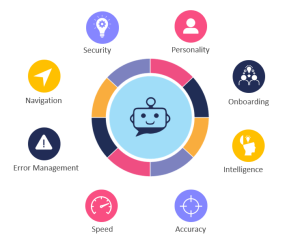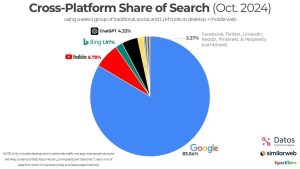Leverage data in the purchase stage to increase conversion rates, average order value and lifetime customer value.
Without good data collection, access and analysis, it is harder for brands to understand their customers. Likewise, it is more difficult for customers to indicate their preferences for the brands they support. This article series explores this challenge and opportunity across the customer journey.
In the first article of this three-part series, we looked at the importance of data in making customers aware of our products and services and educating them on our key points of differentiation.
In this second part, I will explore a critical part of the journey: the purchase stage. This is where customers convert from prospective customers to active ones, and past customers convert again.
Defining the purchase stage

Let’s begin by defining what we mean by the purchase stage in the customer journey. This stage signifies the shift from potential to paying customers as they make informed purchase decisions. Your goal is a seamless and engaging purchasing experience that caters to the customer’s needs and expectations and unleashes the power of data within this journey. To achieve this, make sure to:
- Optimize your ecommerce platform.
- Meticulously streamline the purchasing process.
- Offer a myriad of payment options.
- Provide concise yet compelling product information to empower customers to make informed choices.
You can unlock growth and strengthen audience connections by leveraging customer journey data.
The data you need at this stage
Customer journey data is invaluable. It provides insights into customer behavior and unlocks opportunities for growth and improvement. Let’s explore the types of data that are key in this process and how they can be leveraged.
Transactional data
This includes crucial sales and revenue metrics, such as average order value (AOV), clearly showing your business’s financial performance. Transactional data lets you identify areas for improvement and make data-driven decisions to enhance your bottom line.
Product data
Understanding which products are most popular among your customers is essential for effective cross-selling and upselling strategies. Product data, such as the product mix and the top-selling items, can help you capitalize on opportunities to drive additional sales and boost customer satisfaction.
Customer data
Getting to know your customers more deeply is essential for building lasting relationships. Demographic information, purchase history and other data provide valuable insights into customers’ preferences and behaviors. Armed with this knowledge, you can personalize your marketing efforts, tailor your messaging and create exceptional experiences that resonate with your target audience.
Website analytics
A high-performing website is integral to the success of your customer journey. Analyzing metrics such as bounce rate, pages per session and average time on site enables you to gauge the effectiveness of your website and optimize its user experience. Identifying areas for improvement and enhancing the checkout process can help increase conversions and drive customer satisfaction.
Customer feedback and reviews
Your customers’ voices matter. You can gain valuable insights into your brand’s strengths and weaknesses by actively seeking and incorporating customer feedback and reviews. This feedback helps you enhance the overall customer experience and serves as a valuable source for identifying key improvement areas for your business.
Where AI fits in
When analyzing data in the purchase stage, artificial intelligence (AI) can be a game-changer. Below are three ways AI seamlessly fits into the purchase stage, bringing benefits marketers can’t ignore.
Personalized product recommendations
Gone are the days of generic suggestions. AI harnesses the power of data to offer individualized product recommendations based on customers’ purchase history, browsing behavior and preferences. This boosts customer satisfaction and drives loyalty and repeat purchases.
Streamlined checkout process
Say goodbye to clunky and time-consuming checkouts. AI-powered systems revolutionize the purchase process by simplifying it for customers. These systems reduce friction, ensuring a seamless checkout experience that delights customers and keeps them coming back for more.
Enhanced customer engagement
AI empowers marketers to engage customers on a whole new level. Through data analysis, AI enables marketers to understand their audience better and create hyper-personalized experiences. By leveraging AI, marketers can deliver targeted messaging, personalized offers and tailored content, resulting in higher customer satisfaction and increased sales.
But what exactly are the benefits of using AI in the purchase stage of the customer journey?
- Boosted AOV and revenue. With AI-driven personalized recommendations, customers are more likely to discover and purchase additional products, increasing the average order value and driving revenue growth.
- Improved customer satisfaction and loyalty. AI enhances customer satisfaction and fosters loyalty by providing tailored recommendations and a frictionless buying process. Satisfied customers are more likely to become repeat buyers, brand advocates and long-term partners.
- Streamlined and efficient purchasing process. AI eliminates hurdles in the purchasing process, making it efficient and hassle-free. This delights customers and saves time and resources, allowing you to focus on other critical aspects of your strategy.
Other considerations: Measurement and reporting
As marketers, we understand the critical importance of measuring the success of the purchase stage within the customer journey. It ensures continual improvement and fuels our drive for increased performance. Here are some key metrics that can guide you:
Purchase rate and conversion rate metrics
Analyzing these metrics lets you gain valuable insights into how many prospects successfully convert into buyers. You’ll also identify any potential drop-off points in the purchasing process that may require attention.
Average order value and revenue reports
These reports are your trusty companions in understanding the monetary value generated from each customer. With this information, you can unlock opportunities to boost your AOV through strategic cross-selling or upselling techniques.
Customer satisfaction and net promoter score reports
Happy customers are the lifeblood of any business. These reports reveal customers’ satisfaction during their purchasing journey and provide invaluable feedback on the overall customer experience.
The benefits of incorporating a robust measurement strategy during the purchase stage include:
- Powering revenue and customer satisfaction optimization. Armed with the right insights, you can fine-tune the purchasing process to maximize revenue generation and customer satisfaction.
- Unlocking cross-selling and upselling opportunities. Identifying the perfect moments to offer additional products or upgrades can significantly enhance your average order value and increase customer lifetime value.
Adopting a data-driven approach to measuring success within the customer journey can revolutionize your marketing strategies and take your business to new heights. Remember, every data point holds a wealth of opportunity, but it relies on smart marketers to know how to use the data meaningfully.
What about data privacy?
Consumer data privacy is critical throughout the customer journey, especially at the purchase stage. As marketers, protecting and handling customer data with the utmost care is crucial. Here are some key points to keep in mind:
- Payment processing security. Make sure all payment data is transmitted securely, with no sensitive data, like credit card numbers, stored or accessible.
- Data storage and handling. Treat purchase stage data with the same level of care as data collected during the acquisition stage. Implement robust security measures to prevent unauthorized access and misuse.
- Data sharing and third-party disclosure. Data sharing with third-party partners, like shipping providers or payment gateways, might be necessary within the purchase stage. However, it’s crucial to collaborate only with reputable partners with well-defined data privacy policies.
Optimizing the purchase stage
There is a lot at stake during the purchase stage of the customer journey. The right approach to data can make the difference between a winning conversion rate from happy customers versus quite the opposite.
In this series’s next and final article, we will look at the power of customer data as we build relationships with our active customers, creating loyalty and increasing customer lifetime value.
The post Driving growth through data: Optimizing the purchase stage appeared first on MarTech.
(34)
Report Post







